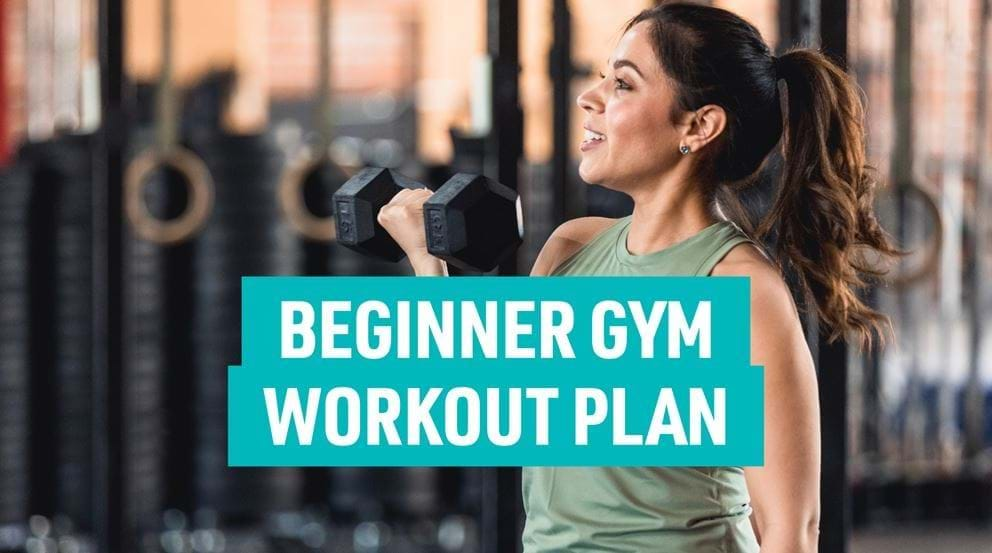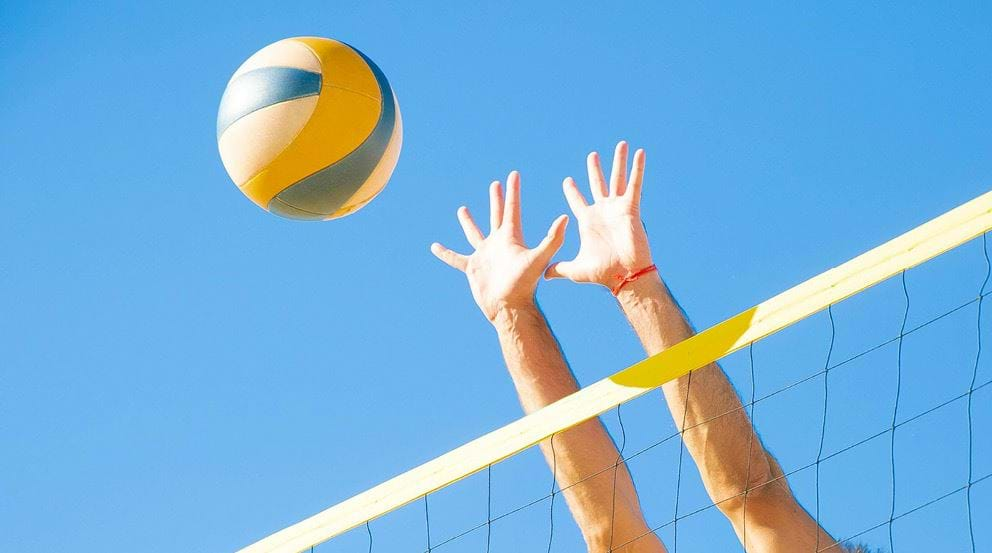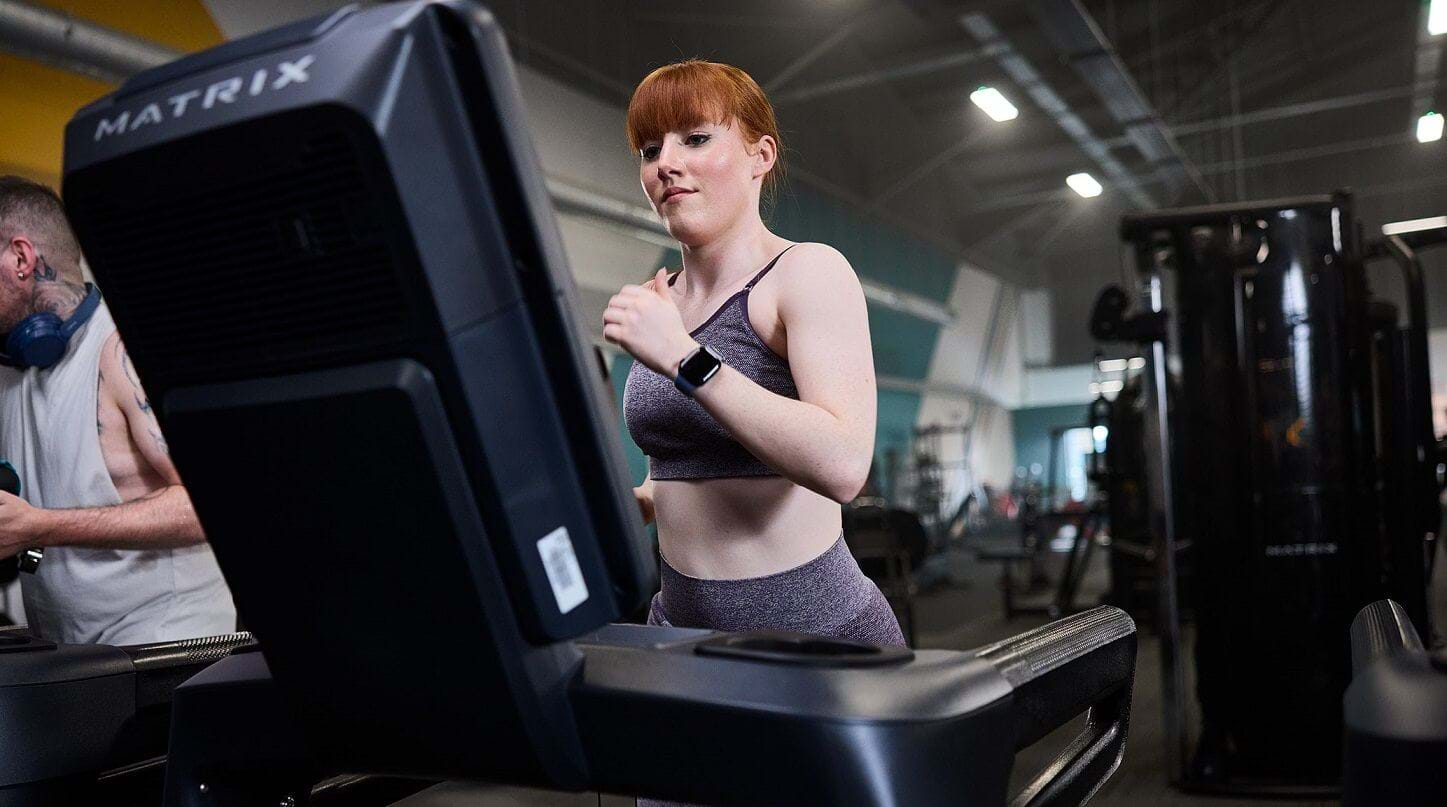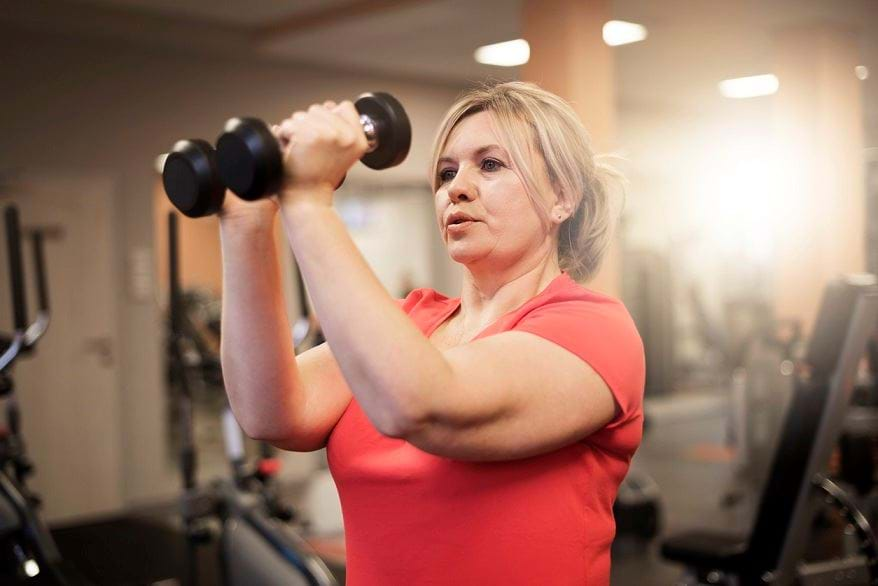The Best Gym Workout Plans for Beginners

Why Are Workout Plans So Useful For Beginners | What to Consider When Creating a Gym Workout Plan | Q&A With PT Doni Thompson | 3 Day Beginner Workout Plan | 4 Day Beginner Workout Plan | Beginner Full Body Workout Plan | More Beginner Workouts
If you're just getting started at the gym, it can feel challenging knowing what to do and how to shape your visits to the gym. What are your goals? Do you know what workout plan is best for you to hit those goals? What do all these machines do? We know it can seem overwhelming in the early stages.
That's why creating a solid workout plan can be one of the best places to start when forming new exercise habits. We'll look at some of the best ways to get started at the gym if you're a pure beginner, as well as some workouts focused on training specific muscle groups.
Why Are Workout Plans So Useful For Beginners At the Gym?
Having a workout plan is beneficial for a few reasons.
Knowing what you need to do each workout can make each gym session a little smoother for beginners. It means you can simply turn up, follow your plan, and head home, rather than making it up as you go along. Plus, you can research your exercises beforehand to feel confident in how to perform them. This can help to ease any gymtimidation you may be experiencing and make your gym sessions more comfortable.
Having a workout plan is also one of the best ways to achieve your fitness goals. It allows for consistency and progressive overload, which are key to building muscle and improving your strength and endurance.
A workout plan can also help beginners avoid overtraining and undertraining. It allows for progress to be tracked and means you make the most of your time at the gym. You can download our free workout plan templates if you need help shaping your schedules.
**What Should Beginners Consider When Creating a Gym Workout Plan? **
Creating a workout plan for the gym can be a useful way for beginners to set specific fitness goals and stay motivated as they progress. Here are some steps that you can follow to create a workout plan:
- Determine your fitness goals: What do you want to achieve through your workouts? Do you want to build muscle, lose weight, or improve your cardiovascular endurance? Having specific goals in mind will help you create a workout plan that's perfectly tailored to your needs.
- Choose exercises: Select exercises that will help you work towards your fitness goals. Consider choosing a mix of exercises that target different muscle groups, including exercises for the upper body, lower body, and core, and make sure to include a mix of compound and isolation exercises.
- Plan your workouts: Determine how many days per week you want to work out, and schedule your workouts accordingly. Consider breaking up your workouts into muscle groups or focusing on different goals in each gym session. For example, strength in one, cardio in another.
- Set a schedule: Choose specific times of the day or week to complete your workouts. Make sure to set aside enough time to complete your workouts, and try to be consistent with your schedule.
- Track your progress: Keep a record of your workouts, using either a specific app, making notes on your phone or even writing on a good old-fashioned piece of paper. Include the exercises you completed, the number of sets and reps, and the weights you used. This will help you to see your progress over time and adjust your workouts as needed.
Remember to start slowly and gradually increase the intensity of your workouts as you become more comfortable and confident in the gym. Consult a personal trainer or fitness professional if you have any questions or concerns about creating a workout plan.
While these are the basics of creating a workout plan, it can help to use existing gym plans as a starting point.
Q&A With PureGym PT Doni Thompson
We spoke to Doni Thomson, Personal Trainer at Pure Gym Aberdeen for some workout plan ideas that you can get started with today.
**How Often Should You Workout Each Week? **
For beginners, I usually recommend starting with three to four days at the gym per week max. While it might be tempting to go hard every single day, it's important to include rest days as these are when your body recovers and progress is made. This is especially true if you're new to exercise -- if you go too hard too fast, you're much less likely to stick with a routine.
How Long Should I Warm Up For?
It's vital to include 5 - 10 minutes of easy cardio or dynamic stretching for a warm up, as well as either 5 minutes of easy cardio to cool down, or some mobility/stretching. This will help prevent and even relieve post workout muscle soreness, and reduce the risk of strain or injury.
What Does a Great Beginners Exercise Plan Look Like?
A good, well-rounded workout plan should include strength training, mobility work, and cardio. Strength training builds muscle, mobility and flexibility training improves how the body moves and feels and can assist strength training, while cardio is important for health and circulatory health.
The mix of these will likely change depending on your goals. If you want to lose weight, you may have more cardio sessions than someone whose sole goal is to build muscle.
That said, there's nothing to say that strength, cardio, and mobility can't all be in the same sessions, but it can be helpful to split your workouts to focus on different workout types depending on how often you plan on working out.
What Are Some Beginner Workout Plans You'd Recommend?
The example plans I've provided here include:
- Full body workouts: Full body workouts are a great option if you are fairly new to strength training. They allow all the major muscle groups to be worked in as little as two sessions a week, allowing for plenty of recovery. You can also focus on the basic compound movements like squats. Plus, when you're new to lifting you'll likely experience newbie gains, which means you can see incredible progress from basic full body routines. We explain more about the benefits of full body training here.
- Cardio: Choose a style of cardio that you enjoy, or maybe mix it up each time. Examples include running or brisk walking on the treadmill, or using the stepper or cross trainer. You can also go to cardio-based fitness classes if you struggle staying motivated during your cardio session.
- Mobility: This section of your plan will focus on stretches and gentle movements like yoga or pilates poses. Perfect for improving your strength, flexibility, and stability, these can use equipment like resistance bands, weights, and balancing balls, but can also easily be done without any of these. Check out our mobility and flexibility hub for ideas of what to include.
Here are a couple of other options for how to split your workouts, depending on whether you're planning to head to the gym three or four times each week.
Three days per week workout split plan:
If you only want to work out three days per week, I recommend spending an hour per session and completing strength training, cardio, and mobility in all three workouts.
Because each session works the full body, make sure to leave at least a full day's rest between each workout, for example Monday, Wednesday and Friday.
Day 1
- 40 minute full body strength workout
- 10 minute mobility
- 10 minute cardio
Day 2
- 10 minute mobility
- 25 minute full body workout
- 25 minute cardio
Day 3
- 40 minute full body workout
- 10 minute cardio
- 10 minute mobility
Four days per week workout split plan:
If you'll be spending four days at the gym each week, you can cut your workout times down slightly to around 30-45 minutes, and perform your cardio and mobility on separate days.
Day 1
- 45 minute full body workout
**Day 2 **
- 20 minute cardio
- 10 -- 20 minute mobility
**Day 3 **
- 45 minute full body workout
**Day 4 **
- 20 minute cardio
- 10 -- 20 minute mobility
Example Full Body Routine to Include in Your Beginners Gym Plan
It can be difficult to plan an effective workout when you are new to the gym, so below I've shared an example beginner workout that targets your whole body. You could use this for all your full body workouts each week, or alternate it with a different full body workout to do more exercise variations across the week.
There are plenty of other full body workouts on the PureGym blog you could try alongside this, such as this full body workout with weights.
**Leg Press Machine **
Targets: Legs.
Three sets of 8-10 reps.
- Adjust the seat and backrest to a comfortable height.
- Sit on the seat and place your feet flat on the platform, slightly wider than shoulder-width apart.
- Grip the handles on the sides of the seat.
- Press down on the platform with your feet, straightening your legs and lifting the weight.
- Slowly lower the weight back down to the starting position.
- Repeat the desired number of times, taking a brief pause between each repetition.
**Flat Dumbbell Chest Press **
Targets: Chest.
Three sets of 10-15 reps
- Select a pair of dumbbells and lie on a flat bench with your feet flat on the ground.
- Hold the dumbbells at your sides with palms facing forward.
- Engage your core and press the dumbbells upward until your arms are fully extended.
- Slowly lower the dumbbells back down to the starting position.
- Repeat the exercise for the desired number of reps.
**Shoulder Press Machine **
Targets: Shoulders.
Three sets of 6-10 reps
- Select a pair of dumbbells and lie on a flat bench with your feet flat on the ground.
- Hold the dumbbells at your sides with palms facing forward.
- Engage your core and press the dumbbells upward until your arms are fully extended.
- Slowly lower the dumbbells back down to the starting position.
- Repeat the exercise for the desired number of reps.
**Lat Pulldown **
Targets: Back.
Three sets of 6-10 reps
- Adjust the seat height of the machine so that your knees are bent at a 90-degree angle when you sit down and your feet are flat on the ground.
- Grasp the bar or handle with an overhand grip, positioning your hands slightly wider than shoulder-width apart.
- Engage your core and keep your back straight as you pull the bar or handle down towards your upper chest, squeezing your shoulder blades together.
- Keep your elbows close to your body as you lower the bar or handle back to the starting position.
- Repeat the movement for the desired number of repetitions.
Dual Action Arm Machine: Bicep Curl and Tricep Pushdown
Targets: Biceps and Triceps.
Three sets of 8-12 reps
- Adjust the machine so that it allows for both curling and pushing motions. Ensure the seat height and handle positions are comfortable for both exercises.
- Sit on the machine with your back straight and feet flat on the floor. Grasp the handles with an underhand grip for the bicep curl.
- Complete the desired number of repetitions for the bicep curl first, then immediately transition to the tricep pushdown without rest. This completes one set.
- Take a short rest period between sets, then repeat the sequence for a total of three sets.
Bicep Curl:
- Engage your core and keep your upper arms stationary as you curl the handles towards your shoulders by contracting your biceps.
- Squeeze your biceps at the top of the movement, pausing briefly.
- Slowly lower the handles back to the starting position, fully extending your arms.
Without changing your position, switch your grip to an overhand position for the tricep pushdown.
Tricep Pushdown:
- Engage your core and keep your elbows close to your sides.
- Push the handles downwards by extending your arms, fully contracting your triceps at the bottom of the movement.
- Pause briefly at the bottom, ensuring your arms are fully extended.
- Slowly return the handles to the starting position, allowing your elbows to bend to 90 degrees.
Plank
Targets: Core.
1 set holding as long as you can, improve each week if possible.
- Begin in a prone position on the mat, resting on your forearms and toes. Your arms should be bent at a 90-degree angle, with your elbows directly under your shoulders.
- Engage your core and keep your back straight as you lift your body off the ground, forming a straight line from your head to your toes.
- Hold this position for the desired amount of time, making sure to keep your body straight and your core engaged. You should feel a contraction in your abdominal muscles as you hold the plank.
- To modify the plank, you can drop down to your knees or place your hands on a raised surface such as a bench or step.
Looking For More Beginner Workouts?
If you want to mix up your beginner workout plan with a few more targeted exercises, take a look below for some inspiration.
Full Body Plate Workout For Beginners
Train your entire body with this exercise routine, which is designed to improve your fitness and help you get stronger. For this workout, all you need is two weight plates and a mat from the studio. 5kg can be a good starting point for plates, but you may want to test a few to find the size that feels right for each exercise.
Perform four sets of 8-12 reps of each exercise (double up on the lunges by doing 8-12 each side), with a minute rest between sets.
You could also perform this as a circuit, by doing 8-12 reps of each exercise straight after another with a minute rest before repeating 3-4 times.
Beginner's Ab Workout
Improve your core strength with this beginner-friendly, no-equipment ab workout - all you need is a mat!
There are a few ways you can do this workout. The first is by performing each exercise for 10 reps with a 20 second rest in between, and completing the circuit twice. The second is an AMRAP workout (as many reps as you can do): do as many repetitions as you can in 30 seconds, rest for 30 seconds, then move onto the next exercise. Once you've completed all 6 exercises, take a full minute rest and perform the circuit twice more.
Discover even more ab workouts on our blog.
Beginner's Upper Body Workout
Develop your overall upper body strength with this workout which targets your chest, shoulders, back and arms. For this exercise, you'll need access to a lat pulldown machine, cable machine, dumbbells, and a mat.
- Lat pulldown. Perform 10 reps. Rest 1 minute. Complete 4 sets.
- Dumbbell floor press. Perform 10 reps. Rest 1 minute. Complete 3 sets.
- Seated cable rows. Perform 10 reps. Rest 1 minute. Complete 4 sets.
- Lateral raises. Perform 10 reps. Rest 1 minute. Complete 3 sets.
Head over to our arm and shoulders or chest workout hubs for more inspiration. Alternatively, if you'd like to know how to put a workout plan together, check out our article on how to plan a weight training programme.
Beginner's Lower Body Workout
Strengthen your lower body with this minimal equipment workout targeting your quads, glutes, hamstrings and calf muscles. All you will need for this workout is a pair of dumbbells and a mat.
- Goblet squats. Complete 8-10 reps. 4 sets. 1 minute rest in-between.
- Stiff leg deadlift. Complete 8-10 reps. 4 sets. 1 minute rest in-between.
- Bulgarian split squats. Complete 8-10 reps. 4 sets. 1 minute rest in-between.
- Glute bridges. Complete 8-10 reps. 4 sets. 1 minute rest in-between.
- Calf raises. Complete 8-10 reps. 4 sets. 1 minute rest in-between.
Our legs and glutes hub pages have more ideas for workouts you can try.
Beginner Hiit Cardio Workout
HIIT cardio is a great way to burn calories, improve endurance and boost fitness in a short, efficient workout.
You can take your pick from any of the cardio machines in the gym: treadmill, exercise bike, rower, ski erg, air bike. If you're not sure how to use the cardio machines in our gyms, check out our guide: How to set up machines.
- Warm up on the machine for 3-5 minutes at a light intensity. If there is resistance on the machine, dial it down to start with.
- Once you've warmed up, increase the resistance slightly, to a level you're comfortable with.
- Work at a challenging speed/intensity for 30 seconds.
- Rest for 20 seconds.
- Repeat this for a total of 10 rounds.
Final Tips to Start Your Workout Journey
Starting to exercise can feel like a challenge, especially when you're a complete beginner. But by taking some simple steps, you'll be able to get started on building your confidence in no time.
Here are some steps you can take to get started:
- Set a goal: Determine why you want to exercise and what you hope to achieve. This could be anything from improving your overall health to losing weight or building strength.
- Choose an activity you enjoy**:** Find an exercise that you enjoy doing. This could be anything from walking to swimming to weightlifting. When you enjoy an activity, you're more likely to stick with it.
- Start slowly: If you're not used to exercising, start slowly and gradually increase your activity level over time. This will help you avoid injury and reduce the risk of burnout.
- Focus on good technique: Even if it means keeping or dropping to a lower weight, resistance or intensity, it's incredibly important that you make sure your form is correct - that way you'll be getting the maximum benefit from your workouts with a lower risk of injury.
- Take it easy: Make sure to allow your body to rest and recover in between sessions to avoid overworking yourself.
- Create a routine: Set aside a regular time each day to exercise. This will help you establish a routine and make it easier to stick with your new habit.
- Get support: Enlist the help of a friend or family member to exercise with you or join a class or group. Having someone to exercise with can make it more fun and help keep you accountable.
- Track your progress: Keep track of your progress by writing down your exercise routine and any changes you notice in your body or how you feel.
Having a workout plan before you go to the gym can be really helpful so that when you arrive, you know exactly what you're doing and how to make the most of your time in the gym.
For more tips to help you get started, check out the rest of the articles in our Starting Out In The Gym section.
Ready to start your workout plan today? Find a PureGym near you and become a member.


